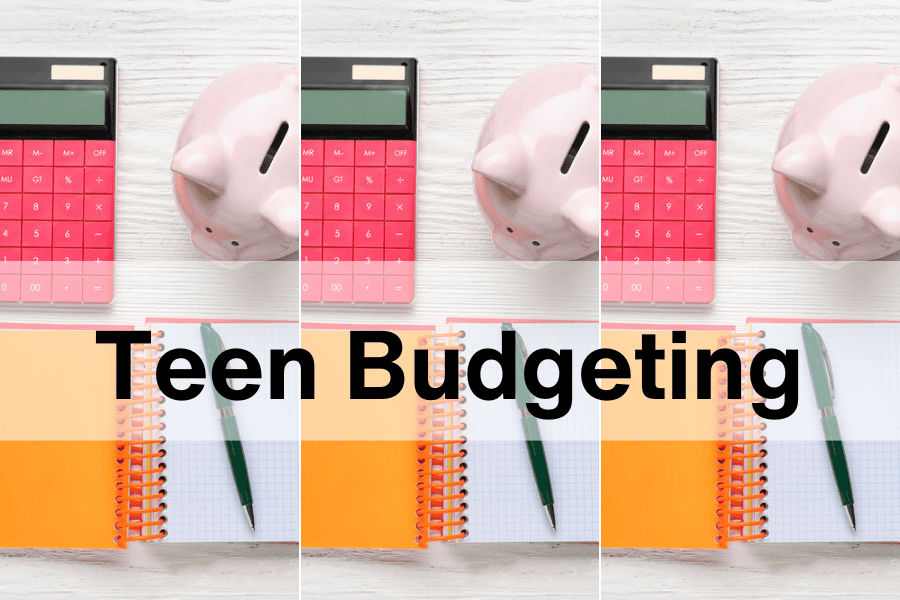11 Teen Budgeting Strategies Every Parent Should Know to Build Smart Money Skills
Last Updated on September 29, 2025 by Yadira Bacelic
This post may contain affiliate links, which means I’ll receive a commission if you purchase through my links at no extra cost to you. Please read the full disclosure for more information.

Introduction
Did you know that only 23% of teens feel confident managing money? That means most are stepping into adulthood without the
That’s why teen
Why Teen Budgeting Is Important
When I was a teen, I babysat a lot. After saving up, I splurged on an expensive pair of sneakers without thinking about what came next. A few days later, when I needed to get to my next babysitting job, I didn’t even have enough money for bus fare. I was stuck, scrambling. I ended up collecting cans and bottles and trading them in just to cover the ride. It was embarrassing at the time, but that moment taught me one of the biggest lessons of my life about teen
That’s why
The bigger picture is this: teen
And let’s be real teens are going to make mistakes, and that’s actually a good thing. Better to learn from a $20 misstep with sneakers than a $2,000 mistake with a credit card later. Teen

How to Start Teen Budgeting
After that sneakers fiasco, I knew I needed a system that gave every single dollar a purpose. That’s when I started using zero-based
For me, the easiest way to stick with teen
But I didn’t stop there. As I got older, I started tracking everything in Google Sheets too. It gave me a clear picture of where my money was going week by week, and I could adjust categories if I noticed I was overspending. I’d put in the babysitting money I earned, subtract what I spent on bus fare or snacks, and make sure the numbers always balanced back to zero. It was a little nerdy, but also super satisfying to see it all line up.
The best part about zero-based
👉 If you want to skip the trial-and-error phase, I made a free Teen Budget Tracker that gives teens a ready-to-use template to start right away. It’s designed to make
7 Effective Teen Budgeting Methods
There’s no one-size-fits-all when it comes to teen
- Zero-Based
Budgeting
This is my personal go-to. Every dollar gets assigned a job so nothing slips through the cracks. If a teen earns $60 from babysitting, they’ll plan out exactly where all $60 goes $30 intosavings , $20 into fun, $10 into transportation, for example. The balance at the end should be zero, but not because the money is gone—it’s because every dollar has a purpose. - Cash Envelope System
I swear by this for beginners. Teens divide their cash into physical envelopes labeled “savings,” “fun,” “transportation,” and maybe a “misc fund.” Once the envelope is empty, that category is done until the next payday. It creates natural boundaries and makes money feel real instead of abstract. - Google Sheets
Budgeting
This was a game changer for me as I got older. Google Sheets (or Excel, if you’re fancy) allows teens to track their income and expenses in real-time. It’s simple to set up, color-coded if you want it fun, and sharable if a parent wants to peek in. Plus, unlike apps, it’s free. -
Budgeting Apps for Teens
If your teen lives on their phone, meet them where they are. Apps like Greenlight, GoHenry, and Step makebudgeting interactive. They often includesavings goals, debit card integration, and spending reports that give teens instant feedback. It’sbudgeting but gamified. - Printable Trackers & Worksheets
Sometimes old school works best. A printable teenbudgeting worksheet taped to the wall or slipped into a binder makes spending visible. Teens can physically check off boxes or write down purchases, which makes it harder to ignore bad habits. -
Savings Jars
This is perfect for younger teens or even preteens. Label jars “spend,” “save,” and “give.” Drop cash in each category and watch it grow. It’s ridiculously simple, but it makes saving feel tangible and fun. - Hybrid Systems
Some of my students mix and match—Google Sheets for tracking, envelopes for cash, and an app forsavings goals. The combo keeps them accountable while still feeling flexible. Hybrid systems can be messy at first, but they usually stick because teens personalize them.
👉 Just to be transparent, there’s also the 50/30/20 rule floating around out there: 50% of money for needs, 30% for wants, 20% for
At the end of the day, the “best” teen

Common Teen Budgeting Mistakes to Avoid
If you’ve ever watched your teen burn through allowance in 48 hours flat, you already know one of the biggest mistakes: spending money as fast as it comes in. I did the same thing. The moment I had cash in my hand, it felt like it was gone before I even thought about saving. Parents can use those moments to talk about teen
Another common mistake? Spending without thinking ahead. I’ll go back to my sneaker story: I saved, I splurged, and then I was broke. I had no backup plan, no cushion, nothing. That’s when I had to collect bottles and cans just to scrape together bus fare. It’s not a glamorous story, but it’s exactly the kind of lesson teens need to hear. As a parent, you can share your own version or even use mine as proof that without a plan, money disappears.
Peer pressure is another huge trap. Teens don’t want to be the only one at the mall not buying something or the only one skipping Starbucks after school. I can’t tell you how many times I wasted cash just to fit in. The best way to counter that is to build confidence through
Credit cards or even debit cards can also feel like “free money” to a teen. Swiping is easy, and without tracking, it’s too simple to overspend. That’s why teen
The biggest mistake of all? Not saving first. Teens often tell themselves they’ll “save what’s left over,” but let’s be real there’s rarely anything left. Parents can help flip that mindset: save first, spend what’s left. It’s a small shift, but it creates a lifetime habit of prioritizing
Here’s the truth: mistakes are going to happen. And that’s a good thing. Better your teen learns from a $20 oops moment now than a $2,000 one later. Your role is to guide, not control. Share stories, laugh at the silly missteps, and use them as teaching moments. Because at the end of the day, teen
How Parents Can Support Teen Budgeting
Here’s the hard truth: teens don’t always listen to lectures about money (I know I didn’t). What sticks with them is guidance, modeling, and small nudges that let them feel independent while still having a safety net. That’s where you, as the parent, come in.
The best place to start is by being open about your own budget. When I finally saw how my mom set aside money for groceries, bills, and even a “rainy day fund,” it clicked that
Another way to support them is by setting family money rules. For example, maybe you agree that a certain percentage of allowance or job money always goes into
Encouragement goes a long way, too. Celebrate small wins. If your teen sticks with their budget for a month, acknowledge it. A simple “I’m proud of how you saved for that” builds confidence more than you’d think. Remember, teen
Now, if you’re not sure where to start, I pulled together my favorite tools—budgeting apps, printable trackers, book recommendations, and even my own tested systems on my Money Resource Page. It’s a curated list so you don’t have to go digging. Sometimes having a toolbox ready makes the difference between starting now and “someday.”
Your role isn’t to micromanage every dollar, but to guide and support. Give your teen room to make small mistakes, be there to talk it through, and show them that
Best Teen Budgeting Tools & Resources
When it comes to teen
- Budgeting Apps for Teens – Apps like Greenlight, GoHenry, and Step make
budgeting feel modern. They give instant spending alerts, tracksavings goals, and provide built-in accountability. Teens love them because it feels like tech, not “homework.” - Printable
Budgeting Trackers – Perfect for teens who like things hands-on. A printable teenbudgeting worksheet makes every dollar visible, reduces guesswork, and turns abstract money into something tangible. - Cash Envelope System – Still one of my favorites. Teens physically divide their money into categories, and when the envelope is empty, that category is closed. It provides instant certainty and eliminates overspending.
- Google Sheets Templates – A step up for older teens who like computers. Sheets make it easy to calculate, track, and adjust categories in real time. Watching the numbers balance out builds confidence fast.
- Books & Videos on Money Skills – Sometimes the same lesson hits differently when it comes from another voice. Quick reads or short videos on money management can spark great parent-teen conversations.
Parents don’t need to waste weeks testing random tools. To save time and reduce frustration, I’ve gathered the best options I’ve personally used and recommend on my Money Resource Page. It’s a curated shortcut so you can skip the overwhelm and give your teen certainty right from the start.
The dream outcome here isn’t about building a “perfect” budget it’s about giving your teen confidence with money. The right tools get them there faster, with less resistance, and with a lot more success.
Conclusion
Teen
👉 Take the first step today: start a
Posts You May Like
Teen Financial Literacy in 2025: A Complete Guide for Parents, Educators, and Teens
9 Common Teen Money Mistakes (and How to Help Your Teen Avoid Them)






